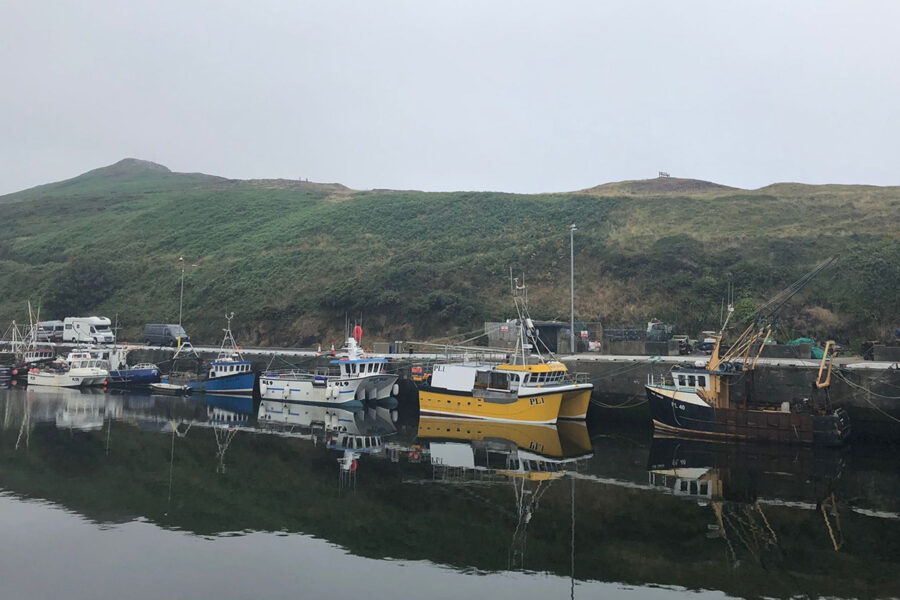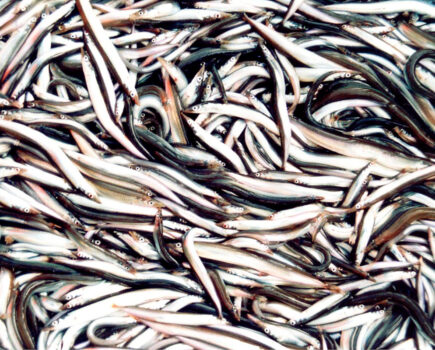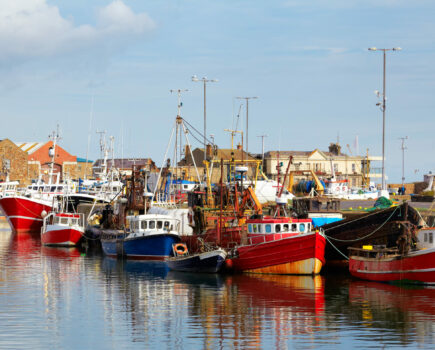Seafish fleet researcher Oscar Wilkie reports on the Fleet Survey’s first visit to the Isle of Man
A historic day: Seafish’s inaugural visit to the Isle of Man was commissioned by the Manx government for the Fleet Survey. Due to a lack of quota within Manx waters (something the government is working on changing), the fleet catches solely non-quota species, predominantly king and queen scallops, crab, lobster and whelks.
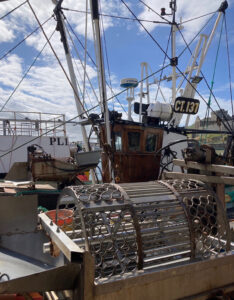
A riddle for queenies on a scalloper berthed at Peel.
The queen scallop fishery, which begins in July and generally takes place up until the king scallop season begins in November, was not something I had seen on such a scale elsewhere in the UK. The trawls rely on queenies’ natural habit of swimming up the water column when disturbed – unlike with a dredge, the method is not reliant on directly extracting scallops from the sediment on the seabed.
Queenies were on menus everywhere in the Isle of Man, and I only had to try them to see why – they’re just as tasty as their more familiar cousin the king scallop. It’s a shame they’re seldom seen on menus in much of the UK.
The Isle of Man has one of the most advanced fisheries management plans in the country, with both scallops and pot-caught crustacea closely controlled. A rigorous set of qualifying conditions to obtain a scallop licence meant that many Cumbrian boats were unable to continue fishing in Manx waters as the local government looked to ensure the continued presence of its own fleet.
For kings, the intention is that the next big recruitment of scallops will, with new management measures in place, be a fruitful fishery for many years to come. Vessels are restricted to a daily catch limit, whilst only certain hours of the day may be fished, and dredge limits are also in place. Grandfather rights are being rolled back to ensure that the future of the fishery is more ‘inshore’ in nature.
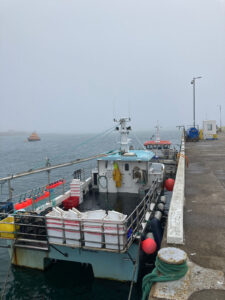
Creel boats at Port St Mary.
Management of crab and lobster is ensured by a pot limit – boats are limited to 500 creels. In many parts of the UK, we hear of fishermen’s wish for a pot limit in their own area, and often these do not come about due to a perception that they’re hard to police.
The Isle of Man government has proven this isn’t the case. It regularly pulls up strings to ensure that each pot is individually tagged, and there are severe fines for those found breaking the limit. Minimum catch sizes for both crab and lobster have recently increased, and no new vessels are able to join the fishery due to licensing restrictions.
The Fleet Survey was very well received by everyone I spoke with in the Isle of Man, and I met some very interesting people. I’m hopeful that the data we’re able to provide is useful to the fleet, the Producer Organisation and the government going forward, and that the Isle of Man is included in the survey for many years to come.
Oscar is a fleet researcher with Seafish, working on the 2022 fleet survey. This is taking place now, with researchers visiting ports and harbours across the country. If you are happy to take part, please email: fleet.survey@seafish.co.uk with your name, email and/or phone number and port of operation, or visit the Fleet Survey page on the Seafish website to find out when researchers will be in your area.
This story was taken from the latest issue of Fishing News. For more up-to-date and in-depth reports on the UK and Irish commercial fishing sector, subscribe to Fishing News here or buy the latest single issue for just £3.30 here.

